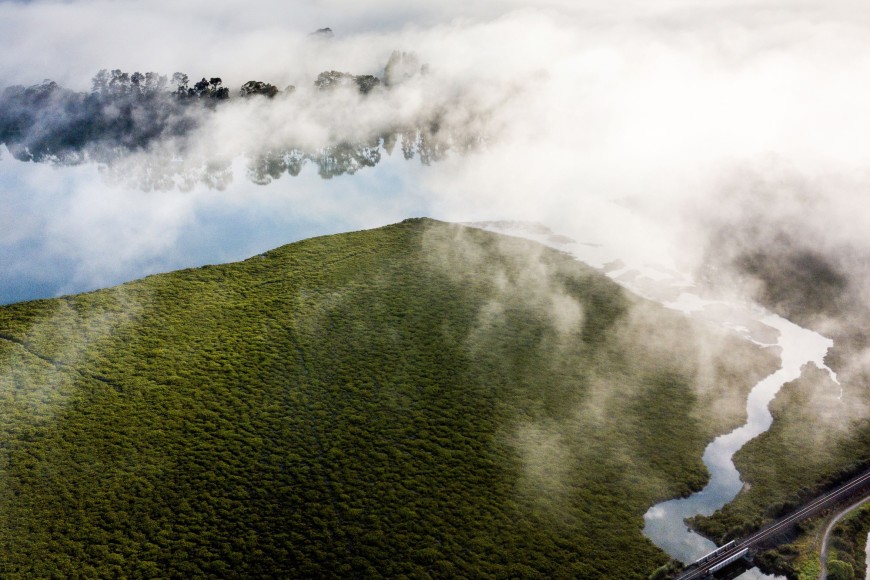Avicennia marina australasica is our only mangrove tree. This tree, known as manawa in te reo Māori, is a small, native subspecies of the Australian grey mangrove. Mangroves are found in only a very small area of the country – they do not tolerate hard frosts, which severely restricts their range, and they only establish in shallow, low-energy, gently shelving, muddy coastal areas. But like mangrove forests around the world, ours punch far above their weight in the benefits that they provide to people. Aotearoa’s mangroves are home to unique biodiversity both in the water and on land, act as a buffer against coastal erosion and storm surges, and stabilise soil. Perhaps most importantly, mangroves are better at carbon capture and storage than most other ecosystems.
Until recently there was no globally accurate picture of mangrove extent or the many benefits they provide to people. In the 80s and 90s, mangrove forests around the world were in steep decline because of pressures from urban expansion, pollution, land reclamation, aquaculture and agriculture. A new report by the UN Environment Programme provides an authoritative and up-to-date snapshot of mangrove status, and brings some positive news. Manaaki Whenua senior researcher in landscape ecology Dr Dan Richards was one of many co-authors from around the world, focusing on analysing changes in mangrove carbon stocks over two decades.

An aerial view of a mangrove forest in Te Puna, Tauranga Harbour.
For the first time, the report quantified gains as well as losses in mangrove coverage. The combined results showed that net stocks of mangrove carbon have stabilised to some extent. From 1996 to 2020, only around 3.4% of the global mangrove carbon stocks were lost. This is much better news than was expected, although this still amounts to a substantial 139 megatonnes of carbon. Recent data on the Global Mangrove Watch website corroborate these findings, estimating that average global mangrove losses over the past decade are just 0.04% per year.
Dan is encouraged by the signs of mangrove recovery. “These ecosystems are crucial for biodiversity and need continued protection. As well as carbon storage, they contribute to the UN’s biodiversity goals under COP and have significant benefits for coastal protection and fisheries too.”
But mangrove success may come at the expense of other ecosystems. Mangroves in New Zealand are slowly extending their range as climate change takes effect. This may lead to some loss of salt marsh and seagrass ecosystems in the future as the limit of severe frosts moves south. To address trade-offs between protecting different types of ecosystem, the UN report recommends “integrated seascape thinking” – aiming to manage these interlinked and interdependent habitats in a more coordinated way to contribute effectively to our national carbon balance, support fisheries, and protect biodiversity. Understanding the current state and importance of mangroves is only the first step – we now need to plan for their future.
Key contact

